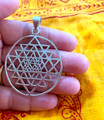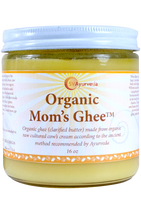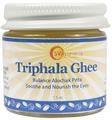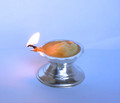 Loading... Please wait...
Loading... Please wait...Categories
- Ashwagandha
- Magnesium
- Preserves
- Turmeric
- Dosha: Pitta
- ASHOKA formulations
- Bath Pouches
- Bone Care
- Chyawanprash
- Souvenirs
- Creams
- Dosha:Vata
- Eyes, Ears, Sinus, Throat
- Face Clay
- Immune
- Dosha:Kapha
- Laundry
- Lentils
- Lip balms
- Liver & Kidneys
- Lotions
- Masalas
- Muscles & Joints
- Oral & Mouth
- Shampoo & Conditioner
- Soaps
- Spray Mists
- Pre Biotics and Probiotics
- Stress & Adrenals
- Dosha:Pitta
- GHEE
- Garcinia
- Protein For Vegans and Vegetarians
- Chutneys & Preserves
- Circulation: Physical and Vibrational
- EVERYTHING ROSE
- Lotions, Creams, & Body Mists
- Shilajit in Formulations
- Thyroid & Adrenals
- Guduchi: Transdermal, Transmucosal, & Oral
- Lotions & Body Creams
- Floral Aromas, Incense, Air Freshener, Body Mist
- Autumn Care
- Ayurvedic Pet Care
- Baby & Children
- Bath, Soaps & Deodorants
- Body Massage Oils
- Cellulite & Skin Care
- Colon Care
- Cooking, Spices, Condiments, & Oils
- DETOX
- Cough & Cold
- Digestion
- DVDs, CDs and Books
- EMF Management
- Emotional Support & Balance
- Eye & Vision
- Fat & Sugar Metabolism
- Gift Baskets
- KICHDI-ON-THE-GO
- Hair Care
- Herbal-Memory Nectars
- Herbal Teas/Coffee Substitutes
- Home (Air Fresheners & Laundry)
- Hormonal Modulation for her & for him
- HP Herbal Nectar Drops
- Immunity & Health
- Individual Herbs & Spices
- Lalita’s Skin & Beauty
- Men’s Health & Shaving
- Mind & Mental Stress Support
- Moringa
- Multi-Minerals
- Oral Care - SVADANTA
- Silver Gift Items
- Sinus Care & Nasya (Nasal) Oils
- Sleep
- Special Needs: Skin & Body
- Stress Management
- Summer Care
- SVA Samadhi with Marma
- Tablets and Capsules
- Transdermal Creams
- Tulsi
- Tridoshic Pain Management
- Vit D, B12, Magnesium, ALA, CoQ10
- Travel Sample Sizes & Starter Kits
- Wild Amla & Chyawanprash
- Winter Care
- Women's Health
New Products
Our Newsletter
- Home
- Cooking, Spices, Condiments, & Oils
- Organic Mom's Ghee
Organic Mom's Ghee
Product Description

Free Article on the Nature & Role
of Ayurvedic Ghee
Learn more »
The value of pure cow’s ghee is repeated continuously throughout the Ayurvedic texts. Cow’s milk, yogurt, butter, and paneer (fresh cheese) are all hailed for their pure vibration and nourishing influence in the physiology, but ghee is said to be the best of all.
The multi-step process of refinement when making ghee yields a product which is the subtlest essence of the milk, containing all of its vibrations in concentrated form.
Not All Ghees Are Created Equal
When ghee is made according to the definition given in the shastras, it provides very deep nourishment to all of the dhatus (tissues) of the body and helps generate ojas, the most subtle material in the body. Ghee made according to the definition is also medhya, nourishing to the brain.
Without ojas there would be no life at all, and depleted or corrupted ojas gives poor immunity and imbalanced function of the neuro-hormones and neuro-transmitters. Ghee can directly enhance ojas in the body, but only if the ghee you eat is made according to the strict guidelines of the shastras.
When ghee is made from old butter or non-organic butter, when it is made from non-cultured butter, when it has become rancid, or does not have a deeply rich, delicious aroma, that ghee is not really ghee according to Charak Samhita, the oldest textbook of Ayurveda. Those types of ghee do not deliver the micro-nutrition and ultimately the prana which the brain and the body require to function optimally. And those types of ghee may even contain toxins which can lodge deep into the fat tissue or the brain, and can lead to disease over time.
It is good to learn how to make ghee according to the definition set forth in Charak Samhita in your own home because it will ensure the greatest freshness and will allow you to enjoy the very medicinal takra, fresh buttermilk by-product of making ghee. But making ghee correctly can be time consuming. We give detailed instructions below. If time is short in your life, we offer this ghee, made according to the definition of the shastras as a way for you to get the benefits of true ghee without doing all of the work.
How To Make Ghee At Home
The process of making ghee is similar to the sequential process of metabolism from one dhatu (tissue) to another dhatu in the physiology, which ultimately yields ojas, the most refined product of digestion—the most subtle substance in the body.
Step 1: Making Yogurt From Cream
This step is good to start the evening before you plan to make ghee.
Start with fresh, organic cream. If you can find raw cream, that is even better because it has not been pasteurized, or ultra-pasteurized.
Pasteurization heats the cream and begins to release the prana contained in it. We want to capture all of the prana at the time we make the ghee. Since pasturized cream has lost some of that prana, it will not make as subtle a ghee as raw cream will. If you can find a cow and get the cream directly to make ghee the same day, that's the very best because the prana of the cream will be fully intact when you use it.
Two or three pints of heavy whipping cream should make enough ghee for a family of three or four people for a week.
The first step is to heat the cream. Use a large pot, with high sides to prevent the cream from boiling over. Keep an eye on the pot as you go. As the cream is heated, it will suddenly begin to boil and will quickly climb the sides of the pot, and can easily spill over onto the stovetop. This can a difficult mess to clean up. It's not a good idea to multi-task when the cream is boiling.
As soon as the cream boils, remove it from the heat to cool. To speed up the cooling process, you can fill the sink with cool water and set the pot in the water. Keep checking the temperature by dipping a clean finger into the cream. When it is luke-warm, or wrist-temperature (body temperature), pour it into containers for making yogurt.
If you have a yogurt maker, you should put starter (fresh, plain yogurt) in the bottom of each jar. It is important to get a yogurt brand which has a good culture and that all of the pro-biotic bacteria be alive in the culture. Natren is a recommended brand on the East Coast of the United States and is originally a Russian culture. Pavel is a decent culture on the West Coast and is also originally Russian. Many brands of yogurt say that they contain various strains of friendly bacteria like acidophilus or bifidus, but many of these cultures are actually dead. The dead bodies of the bacteria are not helpful for health. We need live culture.
If you do not have a yogurt maker, you can use drinking glasses. Put the starter in the glasses, pour the luke-warm cream into the glasses and place them in a frying pan. Put all of them in the oven to sit overnight. You can also use a large glass or metal bowl instead of small glasses, if you prefer. Don't turn the oven, but turn the light on if it is an electric oven. The warmth from the incandescent bulb should keep the oven at more or less body temperature so the bacteria culture can grow. If you have a gas oven, there is no need to turn on the light because the pilot light will keep the oven warm all night.
If you are using a yogurt maker, put the jars into the yogurt maker, close the lid and turn it on. With either method, you will have fresh cream yogurt in the morning.
Step 2: Making Cultured Butter
When you get up in the morning, remove the cream yogurt from the oven or the yogurt maker. Put all the jars or your large bowl of yogurt cream in the refrigerator for one and a half to two hours. The temperature of the yogurt will make a difference when you are churning the butter.
If the temperature of the cream yogurt is too warm, the butter will be very soft and it can be difficult to separate the buttermilk from the butter. If the temperature is too cold (if you leave it in the refrigerator for many hours) the fat molecules will be very solid and won't stick to each other very well when you churn. This can result in much longer churning times. When the yogurt is at the ideal temperature, the churning should be complete in 5 to 10 minutes. If it is very cold, it can take as much as a half hour.
To churn the butter we recommend a stand-up mixer. The Kitchen-Aid style mixers work great. Don't use the wire whisk, because it will get bent when the butter is formed. Use the regular mixing paddle. Start on medium to high speed (as high as is comfortable without splashing cream on the cupboard). You may want to use a splash guard, if your mixer has one.
First the cream will whip... just like making whipped cream. As you keep whipping, it will start turning a more yellow color. This is the butter starting to emerge. At a the end, the butter will separate completely from the buttermilk and will start sloshing around in the bowl. Keep an eye on it as it starts to reach the endpoint and keep turning the speed of the mixed down to minimize any splashing that may occur.
When the butter and the buttermilk (takra) have completely separated, stop the mixer, clean the paddle and use a heavy duty wooden or other spatula to push the butter into a large mass. Pour the buttermilk into glasses to drink with lunch that day. The takra is very medicinal and is considered to be the very best pro-biotic you can take, and is full of many rich micro-nutrients. You can dilute the takra with 50% water to make it thinner if desired. You can also add cumin powder or Mom's Masala, or your own spice mix if you like.
Keep squeezing the ball of butter with the spatula to get as much of the buttermilk out of the butter as you possibly can. It may take a while. But it will take much longer to boil off the buttermilk when you are making the ghee in the next step.
Step 3: Making Ghee
The final phase of this process is to put the butter into a pot and heat on low heat until all the water has boiled off and the protein has been toasted to a crispy brown color. Slow heat is better than fast heat because the protein (or milk solids) tend to stick to the bottom of the pan and can easily burn. Burned flavor in ghee is not good because the ghee will travel deep into the physiology and into the brain and will carry those burned molecules (which are often carcinogenic) wherever it goes.
Keep stirring the ghee from time to time throughout the cooking process to minimize sticking to the bottom and to ensure that the milk solids get thoroughly cooked. At a certain point, the bubbles will change to more dry looking bubbles which come up more slowly than the previous bubbles. You will notice that the ghee is now clear (which is why it is called clarified butter). If you stick a spoon into the ghee, you can see the bottom of it clearly. The color should be a rich golden color and the milk solids will be a dark, golden brown.
Be careful at this stage because it is very easy to burn the ghee. Basically, all of the water has boiled off at this stage and the heat from the stove no longer is being used to evaporate the water (which takes a lot of energy) and maintains the temperature at 100° C or 212° F. Once the water has all evaporated, the temperature begins to climb very rapidly because all of the heat from the burner goes to increase the temperature instead of evaporate the water. Keep the stove on the lowest possible setting at this point and watch it like a hawk. When in doubt, pull it off of the heat and let it cool.
Transfer the ghee to a non-toxic ceramic pot (you may need to let it cool a bit to avoid breaking the ceramic). Use a clean cheesecloth (non-bleached, organic cotton is best) to filter the ghee from the milk solids. Do not use the same cloth week after week because the residual ghee on the cloth eventually becomes rancid. If you are careful, you may even be able to pour the ghee from the cooking pot into the ceramic container very slowly without a cloth. Vaidya's mother used seven layers of cloth to filter the ghee, allowing only the finest molecules to reach the ultimate destination.
We do not recommend glass storage containers because light passing through the glass will damage the ghee, making free radicals and ultimately causing the ghee to turn white around the edges and turn rancid. If you have any rancid smelling or whitish colored ghee in your house, take this opportunity to throw it out. It is a poison for your body. Fresh ghee made with this method described here and prescribed by the shastras should be golden in color and deliciously nutty in aroma. There should not be a burned smell either.
Enjoy the Flavor and the Benefit of Ghee
Whether you make your ghee at home or use the ghee we offer here, the rich aroma and flavor will add a depth to all your cooking and will give deep satisfaction and nourishment to your body, emotions and mind. You can use it in your oatmeal, in your vegetables, lentils, grains, etc. It is considered to be the best fat that you can eat. Of course different people need more or less ghee in their diet. Please consult your physician and Shaka Vansya Ayurvedic practitioner to find out how you should use ghee in your diet.
By the way, the process of making ghee will become second nature if you do it every week or so. It can be integrated with other tasks of cooking dinner, breakfast and lunch.
Navaratri Popcorn:
Ingredients
Ghee (Clarified Butter) made according to the traditional method of the ancient Ayurvedic shastras (texts) from Organic Cow’s Cream. The cream is first cultured into cream yogurt, then churned into butter, and finally cooked until it becomes clarified. With this process, the micro-nutrients of the bacteria culture are added to the nutritional value of the ghee. The flavor is also very rich and delicious, when compared to ghee made from store-bought butter. This ghee deeply nourishes the brain and the body with its pure vibration.
Container Size
1.5 oz.
Directions
Use in cooking to add a rich flavor and divine vibration to the food.
Use under the guidance of a Shaka Vansya Ayurveda practitioner. As with all herbs, please consult with your physician before using.
Disclaimer
This product and statements have not been evaluated by the FDA (Food and Drug Administration) and are not intended to be used to diagnose, treat or cure any disease. All of the information above is intended to be used for educational purposes only and may not be used to replace or compliment medical advice.
Warranty Information

Product Reviews
Previous | Showing reviews 51-54 of 54
-
best ghee

Posted by emma on 1st Apr 2014
its truly great....the only problem is in the
shipping....when its so very cold in colorado
my product has probably been frozen once
or twice before i actually receive it...no
doubt that lessens its original viability.its
a very good product other than this.also, in hot summer i am sure the product has been
compromised riding around in the hot truck
-
Mum's Ghee is my favorite!

Posted by Anastasia on 5th Dec 2013
This is by far the best ghee I have ever tasted. Have bought it for years because I have never found a better one.
-
Best ghee ever

Posted by Lorraine on 30th May 2013
I love this high quality ghee. It is made the proper way, with cream, not milk. Store bought ghee is really just clarified butter. It is not made the proper way and therefore, does not possess the nourishing and health benefits that this ghee has. I trust chandika's products and this ghee tastes great with oatmeal, with stewed apples and pears, and cooked vegetables.
-
Incredible!

Posted by Robert Place on 20th Feb 2013
This ghee is light but nourishing. It spreads easily on toast, rice or vegetables. And it has a wonderful aroma and richness to it.
Previous | Showing reviews 51-54 of 54













